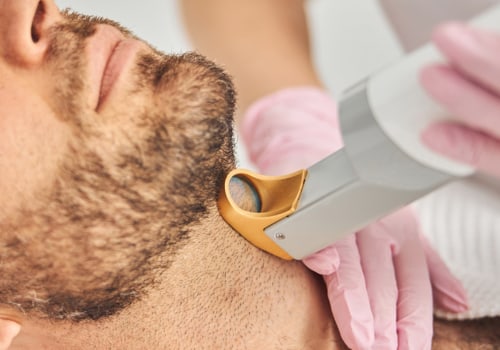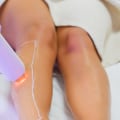Alexandrite Hair Removal Lasers Alexandrite laser is the most popular system for Alexandrite Hair Removal Lasers Alexandrite laser is the most popular system for laser hair removal. It's also the fastest laser system available. The disadvantage of rapid laser repetition is pain. However, because melanin is present in the skin and hair shaft, the Ruby laser cannot be used in patients with skin that is not very light, including tanned skin.
The Alexandrite laser also produces a reddish light that can be absorbed by the melanin in the hair. The main advantages of the Alexandrite laser are that it has a shorter wavelength system compared to other types of lasers, and can treat a larger area of the skin faster. While the Alexandrite laser is safe and effective on a wide range of skin types, people with fair skin are the best candidates, since it can cause discoloration in darker skin types. The Ruby laser, one of the oldest types of lasers used in hair removal, is best suited for people with light or fine hair and fair skin.
Compared to newer laser technologies, the Ruby laser can take longer because it covers a smaller area of skin at a time. The diode laser is one of the newest and most widely used lasers today. It is designed for light to medium skin tones. Compared to other lasers such as Alexandrite or Ruby, the diode laser has a longer wavelength of light, which reduces the risk of skin damage than lasers with shorter wavelengths.
In addition, the diode laser has a fast repetition rate, which means it can treat large areas of the body quickly. Although it is often classified under a laser hair removal treatment, IPL is not really a laser, it is just a light and, as the name implies, intense pulsed light is used to damage hair follicles in a manner similar to how lasers are used in other types of treatment. Common brand names for laser hair removal machines include Cutera CoolGlide, Cynosure Elite, Altus Cool Glide and Candela GentleYag. Compared to other types of laser hair removal treatments, diode laser treatment often requires fewer sessions to complete.
Laser hair removal has come a long way since the first hair removal laser received FDA approval in the mid-1990s. The type of laser treatment you will receive will be based on your own specific profile, mainly, what tone your skin is and what your hair looks like. Hair removal lasers can be performed on any area (yes, any) of the body (except, perhaps, on the eyebrows). A Vogue colleague who has been receiving treatments since she was 15 points out that while her initial appointments felt like burning rubber band clasps, the pain has lessened over the years as the hair follicles have stopped producing hairs.
If hair continues to return in some areas, you may need to come back for more treatments regardless of which laser you choose. While in the past certain skin tones could cause complications with laser hair removal, it is no longer a problem thanks to technological advances. Your dermatologist will select the most suitable laser for you based on your hair and skin type and body area. Expert hair removal requires a highly trained laser operator who has the ability to safely modify the following laser parameters.
Lasers from previous generations were slow, very painful, and only worked on people with very dark hair and very light skin.










